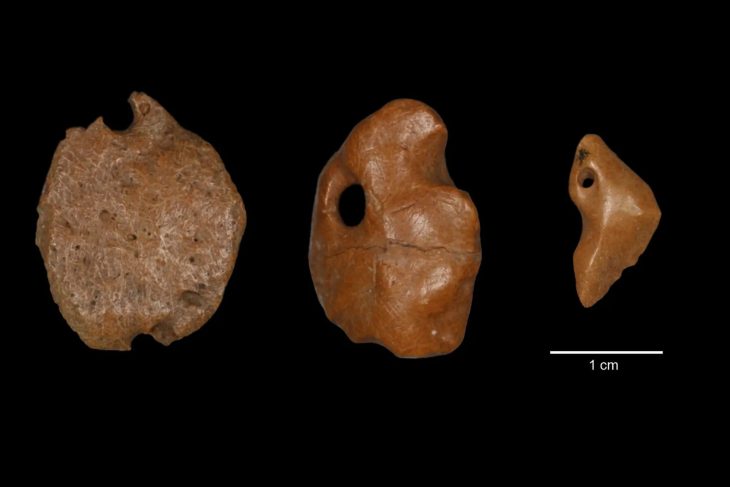Archaeologists have discovered three pendants made from the solid bones of an ancient behemoth, the giant sloth. These extraordinary artifacts, discovered within the confines of a rock shelter, provide a glimpse of a bygone era, dating from 25,000 to 27,000 years ago, marking the oldest known personal adornment in the Americas.
The significance of these pendants extends beyond mere ornamentation; they serve as tangible evidence of a time when humans and colossal sloths roamed the South American landscape in harmony. This revelation challenges established theories regarding the timing of human migration to the Americas, suggesting that our ancestors traversed the continent’s vast expanse far earlier than previously assumed.
Contrary to the conventional narrative of a migratory wave sweeping across a land bridge from Siberia to Alaska some 13,000 years ago, emerging research paints a more nuanced picture of human history in the Americas. The discovery of these ancient trinkets rewrites the script, indicating a coexistence between humans and megafauna that predates conventional timelines.
Discovered three decades ago within the confines of Santa Elina, a rock shelter nestled in central Brazil, these pendants lay dormant until recent comprehensive analysis shed light on their origins. Among thousands of osteoderms, or bony deposits, the pendants emerged as rare treasures fashioned from the remnants of Glossotherium phoenesis, a giant sloth weighing a colossal 600 kilograms (1,323 pounds) and boasting formidable claws for excavation.
Through meticulous examination utilizing an array of scientific methodologies, researchers discerned telltale signs of human manipulation upon the pendants. Polished to a gleaming sheen and punctuated by meticulously drilled holes, these artifacts bear witness to the ingenuity of our ancient forebears, who transformed sloth bones into coveted adornments, likely worn as necklaces or earrings.

Crucially, the analysis unveiled a timeline placing the creation of these pendants within a narrow window following the demise of the sloths, yet preceding the fossilization process. This temporal alignment underscores the deliberate craftsmanship employed by early humans, ruling out the possibility of later human intervention or natural wear and tear.
Giant ground sloths, towering over 13 feet in length and rivalling the weight of an Indian elephant, once roamed the South American continent alongside our ancestors. Their presence, immortalized in these ancient pendants, challenges contemporary perceptions of prehistoric ecosystems and human migration patterns.
Mirian Liza Alves Forancelli Pacheco, co-author of the study and archaeologist at the Federal University of Sao Carlos in Brazil, encapsulates the profound implications of this discovery: “We now have good evidence — together with other sites from South and North America — that we have to rethink our ideas about the migration of humans to the Americas.” Indeed, the unearthing of these exquisite artifacts beckons us to reimagine the narrative of human history in the Americas, where the threads of ancient civilizations intertwine with the vestiges of a bygone epoch.
